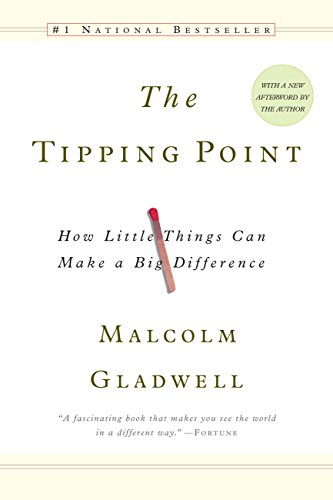

This article is an excerpt from the Shortform summary of "The Tipping Point" by Malcolm Gladwell. Shortform has the world's best summaries of books you should be reading.
Like this article? Sign up for a free trial here .
What are the causes of teenage smoking? How can we prevent teenage smoking?
We’ll use the principles of epidemics to explore possible solutions to the problem of teen smoking.
Teen Smoking: Using the Principles of Epidemics to Stop an Epidemic
The kind of contagiousness that tips social epidemics is often not based on rational or conscious decisions; in fact, subtle, even subconscious cues (like nonverbal signs and environmental factors) can completely alter how we react to a situation. Sometimes, this effect spurs epidemics of people knowingly harming themselves in some way.
You can use the three rules of epidemics to ignite a social epidemic. But you can also use the same insight to extinguish an epidemic. Here, we’ll use the same principles to combat the teen smoking epidemic by disrupting the messengers, the stickiness, or the context.
(Shortform note: The Tipping Point, on which this article is based, was published in 2000, shortly after teen smoking rates in the late-1990s reached the highest levels since the late-1970s. From 2000 to 2017, the Centers for Disease Control and Prevention’s National Youth Tobacco Survey revealed a 73 percent decline in high school smoking.)
Case Study: Using the Principles of Social Epidemics to Combat Teen Smoking
What are the causes of teenage smoking? How can we prevent teenage smoking?
No one born in the past several decades is ignorant of the dangers of smoking. Yet the number of teen smokers in this country rose 73 percent from the late 1980s to the late 1990s, despite fervent efforts and ad campaigns by the anti-smoking movement. The information was widely broadcast (in one study, a group of smokers actually overestimated the risks of smoking), but the approach was missing the mark.
The Law of the Few and the Role of Permission-Givers
The Law of the Few undoubtedly played a part in tipping the teen smoking epidemic. Teen smoking is a prime example of how Salesmen can make a behavior contagious by playing the role (sometimes inadvertently) of permission-givers for something as harmful as smoking. In spite of anti-smoking messaging insisting that the habit is unattractive and uncool, many people have deep-seated associations of cigarettes with sophistication. Often, people think of a smoker from their childhood who exuded a sort of carefree coolness. Knowingly or not, those smokers become permission-givers.
The archetype of smokers as cool rebels is actually no coincidence, as research shows that there are common personality traits among smokers that include extroversion, sociability, sexual precocity, impulsivity, risk-taking, defiance, and indifference to the opinions of others. Many of these are the kinds of traits that make a person seem impossibly cool, especially to teenagers.
Smokers aren’t cool because they smoke, but rather smoke because they are cool; the traits that make these teens prone to smoking happen to be the same traits that make them seem cool to peers. But no matter the reasoning, the association — and its power to influence others to smoke — remains the same. People’s memories of sophisticated family members, older friends, or celebrities (permission-givers) smoking make them want to emulate their cool by taking up the habit as well, overpowering health information and logical self-preservation.
The Stickiness Factor and the Addiction Threshold
What are the causes of teenage smoking? Permission-givers may inspire people to try cigarettes, but the stickiness of the habit itself determines whether they will continue smoking long term. Teen smoking isn’t dangerous when you try it just once or twice; it becomes harmful the more you smoke and the longer you maintain the habit.
Nicotine is addictive only to some people, and among those people, it is addictive to different degrees, likely based on their genetic tolerance for nicotine. Research shows that your experience with your first cigarette is the biggest single factor in whether or not you become a habitual smoker; people who are turned off immediately likely have little to no tolerance for the nicotine.
Among habitual teen smokers, there are two types: chippers and heavy smokers.
- Chippers are people who smoke regularly but variably from day to day, and not at all on some days. They are able to manage the habit and experience little to no withdrawal on days they don’t smoke. For chippers, smoking is contagious but not sticky.
- Heavy smokers begin as chippers, but over time they become more dependent on cigarettes. They are more likely to smoke soon after waking up in the morning, and experience more severe withdrawal symptoms. For heavy smokers, the habit is extremely sticky.
Since addiction happens over time, not instantaneously, this suggests that there is a threshold of nicotine intake, at which point a smoker becomes addicted.
Reducing Teen Smoking By Reducing the Habit’s Stickiness
To stop an epidemic like teen smoking, which has different elements that make it both contagious and sticky, you must decide which factor to tackle.
Combatting contagiousness entails somehow altering the influence of permission-givers. Many permission-givers are cool-seeming teens who are already smoking, setting an example and creating an allure for would-be smokers. Research suggests that peers have a greater impact on children’s and adolescents’ behavior than parents do; based on this, anti-smoking efforts would have to employ the help of the particularly rebellious teenagers who make smoking look so appealing to their peers. That avenue seems difficult, so Gladwell instead turns his attention to addressing stickiness.
To reduce cigarettes’ stickiness, you must change the factors that cause people to become habitual smokers. Malcolm Gladwell explores two possible routes to take.
1. Genetic tolerance for nicotine is one commonality among heavy smokers, but that’s a tricky thing to tackle; how do you change people’s genetic predispositions? However, the concept of an addiction threshold could be exploited by lowering the nicotine levels in cigarettes so much that even heavy smokers’ (e.g. 30 cigarettes a day) nicotine intake would be below that threshold.
2. Research also shows a correlation between smoking and depression that suggests the two might have the same genetic root cause: impaired production of certain mood-regulating brain chemicals. Nicotine substitutes for two of those three chemicals, acting as a cheap stand-in for depression treatment. Anti-depression drugs that target the same chemical deficiencies as nicotine are a promising antidote to cigarettes’ stickiness.
———End of Preview———

Like what you just read? Read the rest of the world's best summary of "The Tipping Point" at Shortform . Learn the book's critical concepts in 20 minutes or less .
Here's what you'll find in our full Tipping Point summary :
- What makes some movements tip into social epidemics
- The 3 key types of people you need on your side
- How to cause tipping points in business and life






